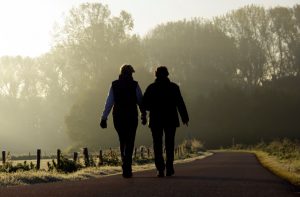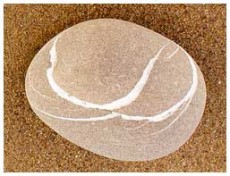
It’s hard to live in a body. Even the healthiest among us faceplant on stairs, get sore throats, trip over shoe laces, scrape elbows, skin knees. Even “normal” bodies beg for pit stops on long car rides. There’s morning bedhead, bad hair days or full going bald. We all get sore feet with stinky toes every now and then, sprained ankles that throb, tummy aches, over-use injuries, sore backs, itches in awkward body parts during, say, symphony concerts. Like houses with broken windows and loose nails, bodies have scars, physical scars from falling off bikes and emotional scars from trauma and cruelty. And so, as for most dwelling places, many of us need support in order to inhabit our internal homes. We need help with this indwelling called embodiment.
Me included. Years ago, in a yoga class, the teacher suggested a mantra as a way to honor our own architecture, the building we inhabit: “This is my body. This is where I live,” she said, “say it throughout the day, when you wake up, before meals, as you lay your head on the pillow at night.”
“This is my body. This is where I live” offered us a gift. It would help us feel comfortable in our inner rooms, some with the tissue-y softness of carpets and curtains; some, like a jawline, with the bone-hardness of walls.
I repeated, “This is my body. This is where I live.” Over and over. And yet I still ate too much, moved too little, stressed a lot. I asked the yogini to clarify. She said, “if you abuse your body, where will you live?” So I started to eat kale, go to bed by 10:00 and began the practice of walking with a pal on what we call “the hills.” Down. Up. Down. Up. Down. Up. Our glutes scream. Hamstrings complain. Legs ache. We bend, stretch, take deep breaths, often walk backwards. We are sore, fatigued, tight, weak at the end.
It’s been in doing hills where I learned about living fear-free in a white body. Yesterday on Town Landing Road, a policeman drove by. He rolled down his window, smiled and waved. I did not have the thought that I should take my hands out of my pockets, or that I might end up in cuffs. On Ramsdell Road we walked in the middle. Cars passed. It never occurred to me that some driver might yell at us, try to run us over, call us names or spit on us because we were not walking on the correct side of the road, that we were doing something wrong that could easily be misconstrued. On Old Powerhouse Road other walkers nodded, “good morning, beautiful day.” I never imagined they might say, “you look suspicious.”
It’s one thing when we abuse our own bodies and end up, in a sense, homeless. But when abuse happens to those we call “other” due to the color of their skin, there is no way the receiver of that abuse can feel safe in that home that is their body. It’s true we all face embodiment together. It’s hard to live in a body. We have to eat well, get good rest, cry our tears, have tough conversations, walk through physical disease and mental and emotional dis-ease. But let’s admit it; in the United States, it’s a lot easier to feel at home in a white body than in one of color. And that is only the beginning of understanding white privilege.



Excellent, Sue! Vital topic. Simple and spot-on articulation of it.